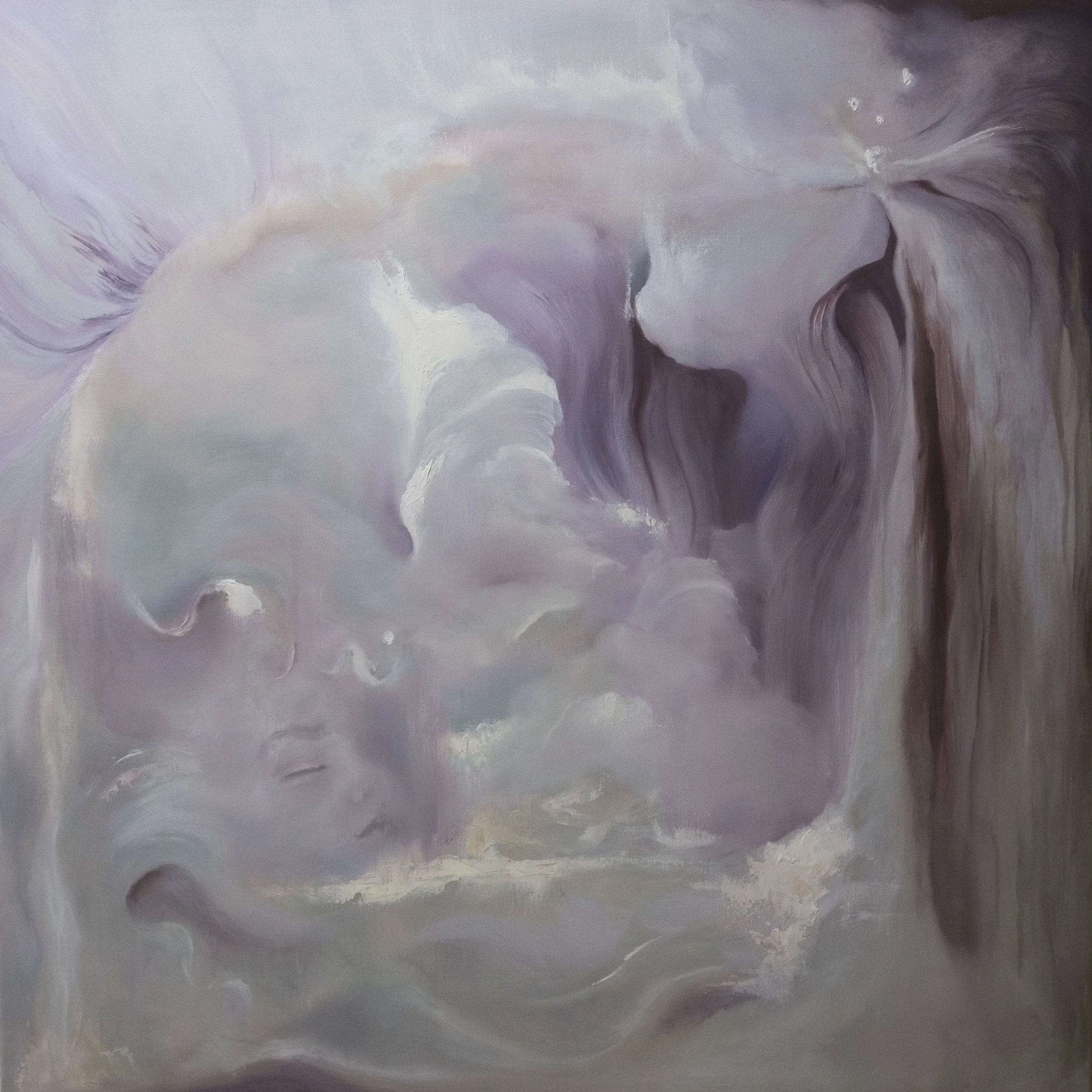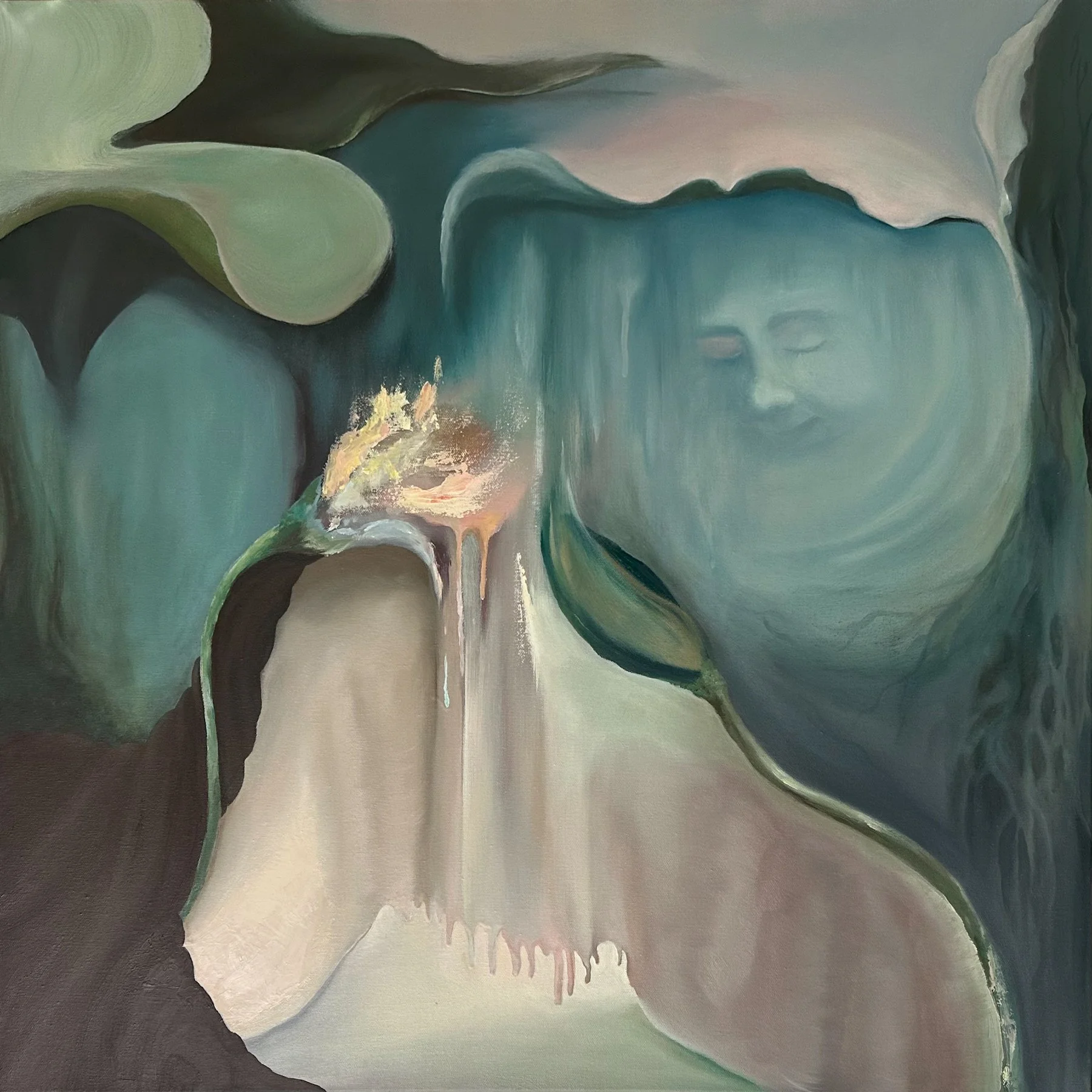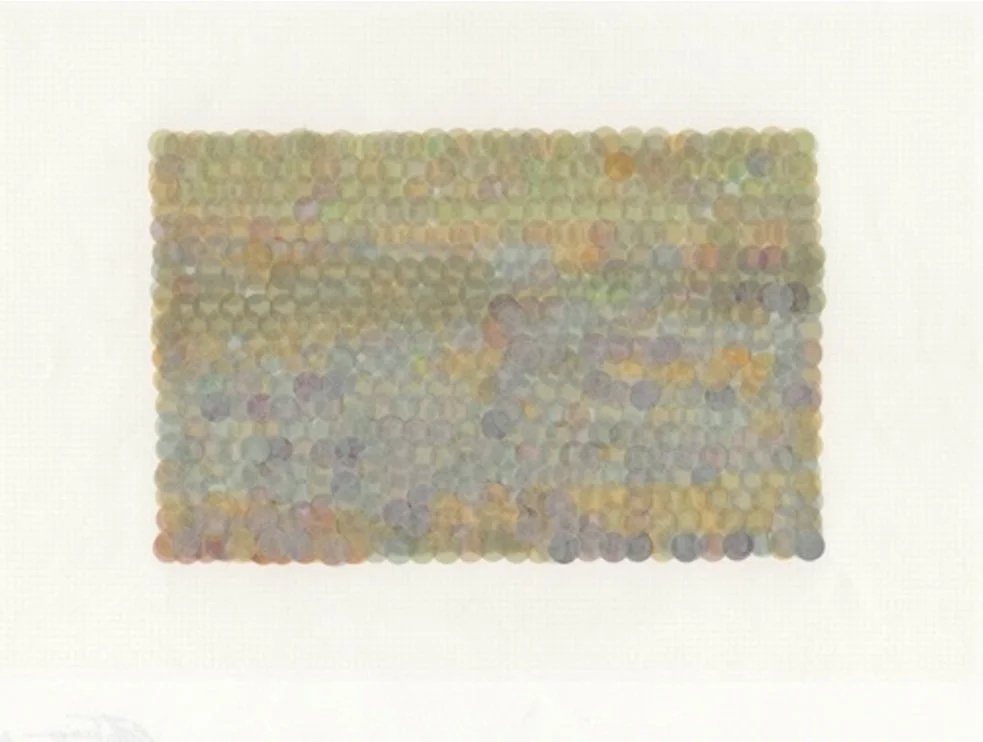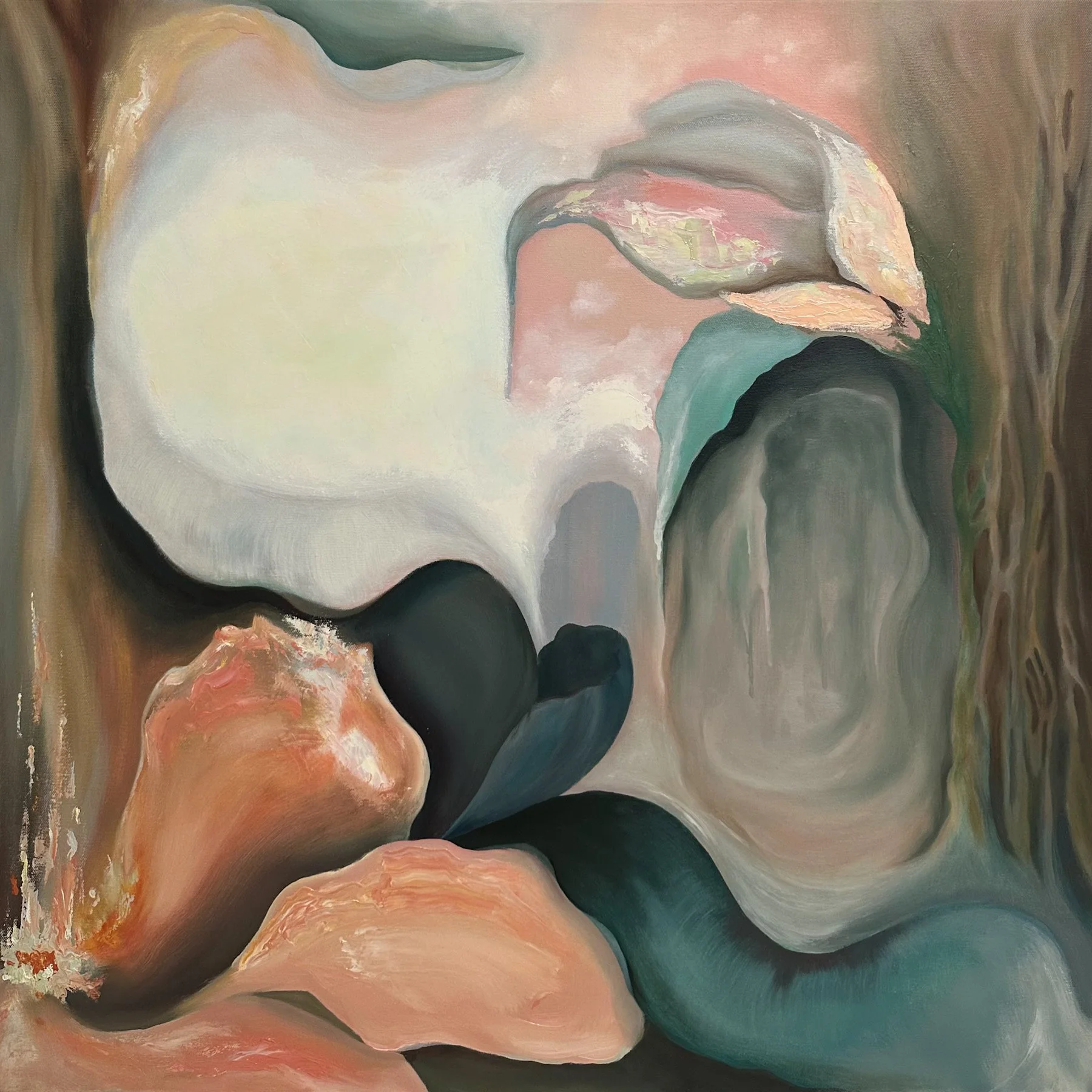Conversation with Betty Susiarjo and John Marie Andrada
Amidst breaths and borders
From left to right: Betty Susiarjo and John Marie Andrada.
This August, Indonesian-born, Jerusalem-based artist Betty Susiarjo presents her solo exhibition Hening at CGartspace in Jakarta. Curated by Heru Hikayat, Hening attempts to embody the space between artist and material, and the geographical distance from Susiarjo to her homeland. The exhibition features 12 works ranging from works on paper using Washi stickers, videos to a wall installation. In the realm of man-made borders and a quest for quietude, Susiarjo blends movement and stillness coexisting in delicate contrast.
Concurrently, Filipino-born, Singapore-based artist John Marie Andrada contributes four new works to a group exhibition Small Things Brought Together at Haridas Contemporary in Singapore. Featuring nine emerging and mid-career artists, the exhibition commemorates Haridas Contemporary’s move to Tanjong Pagar Distripark and offers a preview of the gallery’s programming in the coming year, Andrada’s paintings form the basis of her expanding Undergrowth series, wherein elements of nature become interwoven metaphors for physical sanctuary, desire, and growth.
Intertwining their practices as artists from different generations practicing away from home, I speak with Susiarjo and Andrada on their creation process and the significance of their respective shows, as well as their thoughts on tactility and residence. In this conversation, we learn how the resulting works are borne from experiences of grief and hope, amidst breaths and borders.
Betty Susiarjo, Evenings, 2024-2025, washi stickers on paper, 27.5 x 21cm (each – a set of 9). Image courtesy of the artist.
John Marie Andrada, In Spring, 2024, oil on canvas, 76 x 76cm. Image courtesy of the artist and Haridas Contemporary.
Euginia Tan (ET): Could you introduce yourselves, and where you feel your individual practices currently stand?
Betty Susiarjo (BS): This solo exhibition is a restart for me. I have not been producing works since I became a mother, and my time was intentionally dedicated to my young children. I enjoy group shows because I get to see my works in varying perspectives with others, many of whom are younger than me. However, a solo show is important because I can see the current development of my practice, in relation to where I was.
John Marie Andrada (JMA): I echo this sentiment. Back in school, I started with oil paintings before I went into photography and video. I realised the way I manipulate images has a painterly quality. So, I have since been exploring how to expand on that.
I had my first solo exhibition Breadth of Air last year, which featured image manipulations in the form of a video and paintings. I used different mediums to commemorate my late grandmother. It turned into a statement of the persevering qualities of love. My practice continues with different ways of manipulating images with inks and testing the limitations of what an image can hold. Right now, my works are a cross between figurative and abstract form.
Betty Susiarjo, Earthlight, 2024, washi stickers on paper, 57 x 76.5cm. Image courtesy of the artist.
ET: In both your practices, I hear an ongoing journey. Both of you are also practising away from your countries of birth. Could you describe how you have come to track this internal and external commute emotionally and visually?
BS: When I moved to Jerusalem, I started contemplating notions of invisibility, or the unseen. I am an Indonesian citizen, and both Israel and Indonesia do not have a bilateral relationship. There is no Indonesian embassy in Israel. I have not been in a place where there is no representation or governing body for my country of origin. I experience a sense of invisibility because I have limited knowledge of the language and culture in Israel. On the other hand, I am no longer rooted in Indonesia.
As I am in this state of wandering, my work emphasises that transient quality of staying unseen. It is not trying to hide, but it is also not being vocal. Whether this response arises from fear, uncertainty, or simply the difficulty of explaining the truth. Very often, what appears in front of us may not be reality. What is unseen may hold more truth. I started to question immediate things that appeared in front of me, for example, social media. That made me realise information can be so easily accessed, but it may not always be accurate.
JMA: For me, I grew up in the Philippines where we had a backyard. Moving to Singapore into a public housing flat, there was an estrangement with nature. In my new Undergrowth series, I evoke parts of the human body that remind me of elements in nature. For example, caves may look like our ears, our veins can look like roots, and vice versa. Materially, I attempt to make images more tangible than they are perceived to be.
My painting process is intuitive. The making process is hands on, and what I leave on the canvas is a residue of my thoughts. In that way, there is a kind of transfer akin to moving to different places in the world. The places I go and reside influence and evolve my practice. Ironically, being away sometimes brings one closer to home.
“Ironically, being away sometimes brings one closer to home.”
Betty Susiarjo, The Consistency of Flow, 2025, nail and thread on wall, dimensions variable. Image courtesy of the artist.
John Marie Andrada, Winter Spring, 2025, oil on canvas, 76 x 76cm. Image courtesy of the artist and Haridas Contemporary.
ET: I appreciate how both of you describe your processes with identity, transfer and liminal possibilities in migration and artmaking. Both of your works involve surface manipulation, whether it is via painting, video work, object installation. Could you explain how you perceive surfaces and what it means to include and manoeuvre them in your surroundings?
JMA: For me, surfaces are a way to describe a plane. From there, there are infinite ways to play around and interpret it. When context is removed from an everyday object, such as in Betty's washi sticker series, the stickers become another conduit depending on how they are pieced together. There exists a tactility which screens cannot convey.
BS: We live in a world surrounded by items and materials. From stationery to toys to industrial objects... All these objects excite and stir possibility. There is a desire from our hands to interact, touch and make something out of them. For example, in my work The Consistency of Flow (2025), I use thread and nails on the wall. The idea for this work came about when I was a student, and I was testing stitches on paper. I thought this could be transferred to a wall, wherein the wall is the paper. The threads were then fixed with nails. Now, this work is relevant to me again.
In response to Marie's observation, I do feel our innate tactility is heightened. This is especially in this generation where we witness the production of goods at its peak. As we are exposed to materials, we naturally become curious about their surfaces.
John Marie Andrada, Beyond the Tree's Hollow, 2025, oil on canvas, 122 x 102cm. Image courtesy of the artist and Haridas Contemporary.
Betty Susiarjo, A Dazzling Grey, 2019, stills from video. Image courtesy of the artist.
ET: I would like to delve into the titles of your respective series Undergrowth and Hening. What drew you to these titles and what do they mean for each of you?
BS: For Hening, the curator selected this title based on his reading of departure and returning in my works. Initially, he suggested that there may be some longing for home and its comforts. I do agree that I am yearning for quietude and silence. In the repetition of my making process, I find some solace from everyday life.
It made me question what it meant for me to make art. I realise artmaking is carving space and time for oneself, to dispense full attention into something not quite there yet. Artmaking is becoming, and one must be present for it. This anchors me because the nature of our attention is fragile. This attention is also an experience of beauty. In our daily lives, our attention is constantly broken down. For now, we are conversing. Soon, I will have to get back to the gallery or the kids. Hening represents a purposeful silence, by choice.
“In the repetition of my making process, I find some solace from everyday life.”
JMA: I could not agree more that attention and time are crucial. I cannot create when I am angry, or if there is too much noise! The setting of a space needs to be conducive because creating is an intuitive process for me and I need to pay attention to sense the next step to take.
I chose Undergrowth as my series title to describe the undergrowth of a forest, a network we cannot see. For me, the obscurity of the undergrowth compels me. People are like trees. We grow and go through seasons. To draw parallels to the undergrowth, we never fully know what a person goes through, just as how the undergrowth never reveals itself but keeps thriving.
Betty Susiarjo, Concrete Poetry, 2024, washi stickers on paper, 27.5 cm x 21cm. Image courtesy of the artist.
Betty Susiarjo, The Scent of Rain on Sand, 2025, washi stickers on paper, 18.5 x 100cm. Image courtesy of the artist.
BS: Some titles of works came to me because I live in the desert, which is not a landscape I am familiar with. I grew up in tropical countries where colours are vivid and lush. In the desert, it is mostly ochre. However, the more I familiarised myself with the desert landscape, the more I began to see colours and small signs of life. The sunset against the sky is dramatic.
Living in the desert taught me what is essential. Many items become distractions. Our possessions become “too much” when they are brought to the desert. This changed how I viewed things, from my practice to the interior of my house. I think it is a turning point in my art practice. If I personify the desert, I will describe this individual as cold and reserved. They can be hard to like at first. But the desert also has a feminine quality, amidst the sand and rocks. My heart unfurls in the desert.
John Marie Andrada, In Bloom, 2025, oil on canvas, 76 x 76cm. Image courtesy of the artist and Haridas Contemporary.
ET: For my last question, I would like to ask: as artists from different generations, how does it feel to meet at intersections with your works?
BS: This must be encouraged! There is a lack of intergenerational conversation. We are often asked about our individual practices, but it is enlightening to hear from another perspective and viewpoint. This informs me of how artmaking practices respond to time. Certain things come and go, while some sustain. I would love more of these encounters to happen, across continents and cultures.
JMA: While artists come from different walks of life, the common thread of artmaking is enough to bind us. These conversations help us feel connected, enriched and hopefully reach into other depths of our practices.
This interview has been edited for length and clarity.
Betty Susiarjo’s Hening, curated by Heru Hikayat, is on view from 9 to 31 August 2025 at CGartspace, Jakarta.
Small Things Brought Together is on view from 2 to 31 August 2025 at Haridas Contemporary, Singapore.











